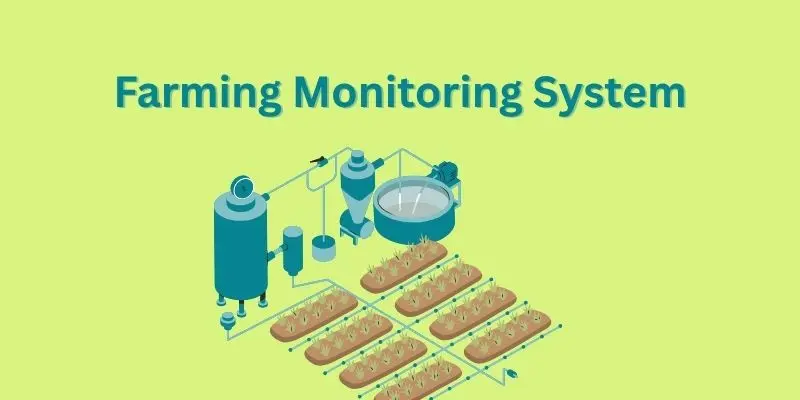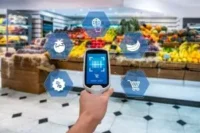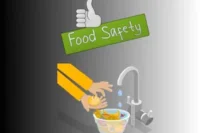Farming Monitoring System: Changing the Future of Agriculture
Published: 28 Jun 2025
Still unsure whether a monitoring system is really worth it for your farm? Wondering how sensors and apps could possibly understand what your crops need better than you do? You’re not alone. Many farmers are hesitant to trust technology with something as unpredictable and personal as farming. But what if this system could actually help you avoid crop loss, reduce costs, and make your daily decisions easier? This guide clears the confusion and shows how smart monitoring is quietly transforming fields around the world—and why it might be exactly what your farm needs next.
So, guys, without wasting time, let’s jump into the article to learn the Farming Monitoring System: Revolutionizing the Future of Agriculture
What Is a Farming Monitoring System?
- A smart agricultural solution that uses technology like IoT (Internet of Things), AI, sensors, drones, and GPS to collect and analyze data from your fields in real time.
- It helps monitor soil moisture, temperature, crop health, weather patterns, water usage, and livestock behavior.
- You receive actionable insights through a dashboard or mobile app—allowing for precise, timely decisions to increase yield and reduce waste.

Why Farmers Feel Safer with Smart Systems
- Peace of Mind: Know the exact condition of your crops, even when you’re miles away.
- Stress-Free Planning: No more last-minute decisions based on guesswork or tradition.
- Better Sleep, Better Farming: Smart alerts warn you of crop stress, pest attacks, or system failures in real-time.
- Confidence & Control: Take decisions based on accurate field data—not gut feeling or weather rumors.
Core Features That Empower Modern Farmers
“These smart features are transforming traditional farming into a precise, stress-free, and high-yield system every modern farmer can rely on.”
Soil Monitoring
- Detects soil moisture, temperature, pH, and nutrient levels.
- Helps avoid over-watering or under-fertilizing your crops.
- Supports smart irrigation—saving water and energy.
☁️ Weather & Climate Monitoring
- Real-time local weather tracking with forecasts.
- Predicts frost, heatwaves, storms, and rainfall so you can prepare in advance.
- Saves crops from sudden weather disasters.
Crop Health Monitoring (NDVI/Multispectral Sensors)
- Uses satellite or drone imagery to detect plant stress early.
- Identifies diseases, nutrient deficiencies, or pest attacks before symptoms appear.
GPS & Field Mapping
- Digitally map your entire field by zones or crop types.
- Visualize problem areas and manage inputs more precisely.
- Reduces waste and boosts output.
Livestock Monitoring
- Track animal movement, feeding behavior, and vital health signs.
- Get alerts for abnormal behavior, illness, or low productivity.
- Improve animal well-being and reduce losses.
Real-Time Alerts & Automation
- Instant notifications via app or SMS for critical changes.
- Trigger automated irrigation or shading systems when thresholds are met.
- Saves time and labor.
Real Benefits Proven in the Field
- 20–40% yield increase due to timely interventions.
- 30–50% water savings with sensor-guided irrigation.
- Up to 60% reduction in fertilizer and pesticide usage.
- Improved profitability by cutting costs and increasing efficiency.
- More resilience against climate change and seasonal unpredictability.
Suitable for All Types of Farmers
- Smallholders can use low-cost, smartphone-based systems.
- Commercial farms can integrate drones, AI, and full automation.
- Available in local languages with offline support in rural areas.
- Compatible with both organic and conventional farming.
Misconceptions Cleared
- “Too expensive?” – Entry-level kits are now affordable and scalable. Many governments offer subsidies or loans.
- “Too complicated?” – Most systems have easy-to-use apps and dashboards—even beginners can operate them.
- “Only for big farms?” – Systems are available for kitchen gardens, small fields, or multi-acre farms.
The Next Step in Modern Agriculture
- Smart Tools for a Smarter Future
Farming monitoring systems connect with sensors, apps, and AI to give you real-time data—so you can make faster, better decisions without second-guessing. - Grow More, Waste Less
These systems help reduce water, fertilizer, and pesticide use by guiding you precisely where and when your crops need care—saving money while protecting the planet.
Emotional Return on Investment (ROI)
- Less worry, more productivity: Focus on growth, not constant damage control.
- Family security: Better harvests mean steady income and peace at home.
- Pride & dignity in farming: Show that agriculture can be smart, modern, and data-driven.
- Legacy protection: Pass on sustainable, tech-savvy farming practices to the next generation.
FAQs about Farming Monitoring System
Here are some of the most frequently asked questions about the Farming Monitoring System: Revolutionizing the Future of Agriculture
A farming monitoring system uses sensors and apps to track things like soil, weather, crop health, or livestock. You don’t need to be a tech expert—many systems are easy to use, even with just a smartphone.
Yes! These systems use soil and weather sensors to guide when and how much to water or feed your crops, helping you save time and avoid waste.
Not at all. There are simple and affordable options for small farms too—even if you only manage a few acres or a home garden.
Some systems are expensive, but many are budget-friendly and scalable. Plus, the savings from better crop health and less waste often cover the cost quickly.
Yes, many farming systems work offline or store data until you’re back online. Some even send SMS updates, so internet isn’t always necessary.
Most systems use simple visuals and color-coded alerts. They show you when something’s wrong and guide you on what action to take.
Final Words
Farming Monitoring System: Revolutionizing the Future of Agriculture” explains how smart technologies like sensors, IoT, GPS, and AI are transforming traditional farming into a data-driven, efficient, and sustainable practice. The content highlights key features such as real-time soil and weather monitoring, crop health tracking, and livestock management. It emphasizes how these systems reduce guesswork, prevent crop loss, and increase yields—while being accessible even for small-scale farmers.

- Be Respectful
- Stay Relevant
- Stay Positive
- True Feedback
- Encourage Discussion
- Avoid Spamming
- No Fake News
- Don't Copy-Paste
- No Personal Attacks

- Be Respectful
- Stay Relevant
- Stay Positive
- True Feedback
- Encourage Discussion
- Avoid Spamming
- No Fake News
- Don't Copy-Paste
- No Personal Attacks





